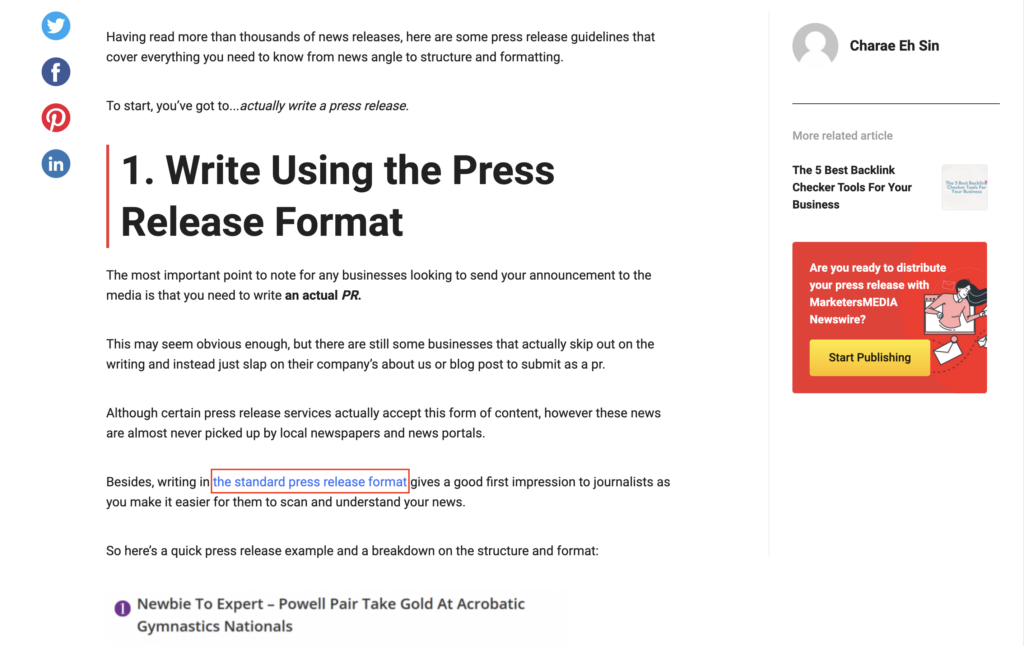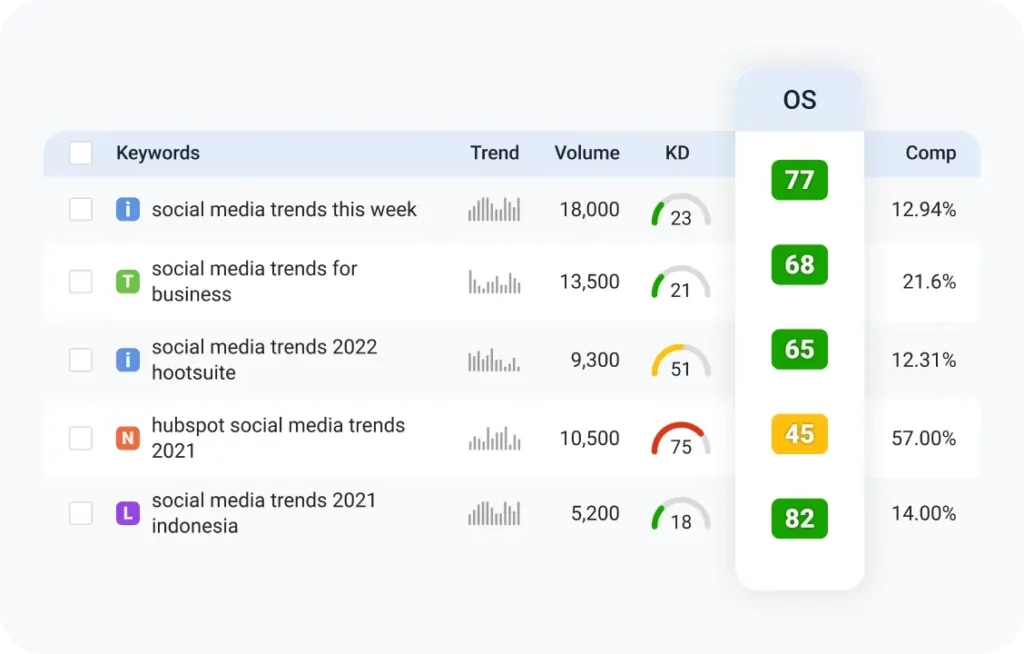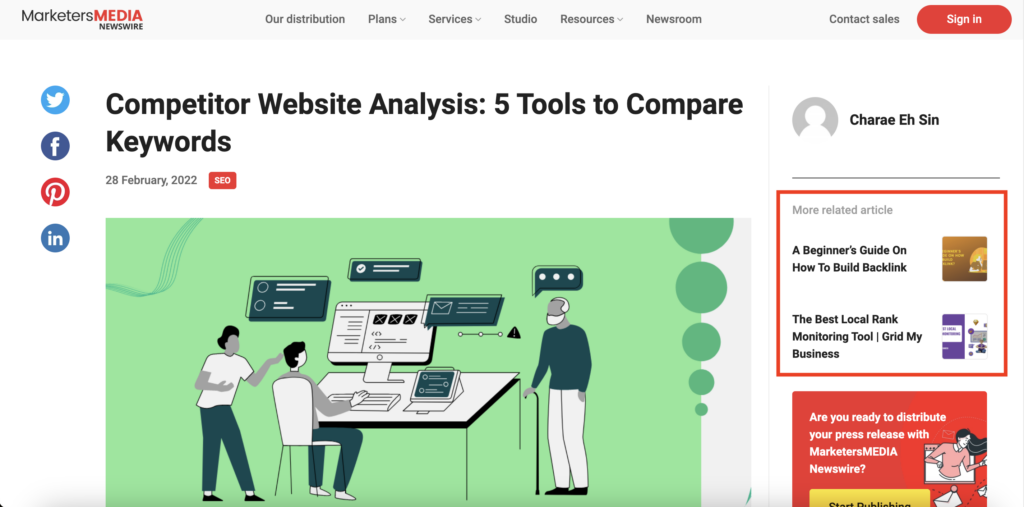
Table of Contents
Imagine your website as a house. You want visitors to feel welcome and find what they’re looking for easily, right? Internal links are like the hallways connecting different rooms in your house. They help search engines understand your website’s structure and guide visitors to explore the valuable content you have to offer.
But before we dive into internal links, let’s take a step back. Have you ever heard of Search Engine Optimization (SEO)? In simple terms, SEO is the practice of making your website more friendly to search engines like Google. The better your SEO, the higher your website appears in search results, making it easier for potential customers to find you.
Here’s where internal links come in. They are essentially hyperlinks that connect pages within your website. Unlike external links that point to other websites, internal links keep visitors engaged within your own content ecosystem.
Now, why exactly are internal links important for SEO? There are three main reasons.
1. They help search engines find and understand your content
Search engines like Google use links to discover new pages on your website. The more internal links a page has, the easier it is for search engines to find and understand its content and relevance.
2. They distribute “link juice” (importance) to valuable pages
Imagine link juice as a measure of a page’s importance. When you link to other pages on your website, you’re essentially sharing some of that link juice with them. This can help boost the ranking of those linked pages in Google search results.
3. They improve user experience
Well-placed internal links make it easier for visitors to navigate your website and find related content they might be interested in. This keeps them engaged and exploring your site for longer.

Benefits of Strategic Internal Linking
Strategic internal linking goes beyond simply connecting pages on your website. It’s about creating a thoughtful network of links that benefits both search engines like Google and your visitors. Let’s explore the key advantages of implementing a strategic internal linking strategy.
Improved SEO Performance
Strategic internal linking helps Google understand the hierarchy and importance of your website’s content. By linking to high-quality, relevant pages, you can signal to search engines which content deserves better ranking in search results.
Besides, remember “link juice” we mentioned earlier? Strategic internal linking helps distribute this link juice more evenly throughout your website. By linking to important pages from other relevant pages, you can boost the overall SEO power of your website.

Enhanced User Experience
Strategic internal linking creates a clear path for visitors to navigate your website. They can easily find related content that deepens their understanding of a topic or explore products and services you offer.
Furthermore, well-placed internal links keep visitors engaged by offering them relevant content suggestions. Imagine reading a blog post about healthy recipes and then seeing a linked suggestion for another post on “meal prepping tips.” This can keep visitors interested and exploring your website for longer, reducing bounce rate (the percentage of visitors who leave after viewing only one page).
Increased Website Traffic
Strategic internal linking encourages visitors to explore different sections of your website. They might stumble upon a product page or informative blog post they wouldn’t have found otherwise, leading to increased overall website traffic.

By guiding visitors to relevant pages that address their needs or interests, strategic internal linking can ultimately lead to more conversions. For example, linking from a blog post about a specific fitness program to a signup page for a free trial can increase the chances of a visitor converting into a paying customer.
Strategic internal linking is a win-win situation. It helps search engines understand your website better, ultimately improving your SEO ranking. At the same time, it creates a more user-friendly experience for visitors, keeping them engaged and potentially converting them into loyal customers.
Internal Linking Best Practices
Now that you understand the power of strategic internal linking, let’s delve into some best practices to maximize its benefits for your website’s SEO and user experience.
Identifying Your Most Valuable Pages
The first step is to identify the pages on your website that deserve the most link juice and attention. These “valuable pages” could be:
- High-performing content: Use website analytics tools to identify blog posts or pages that consistently attract a lot of organic traffic and engagement (time spent on page, comments, etc.).
- Product pages: If you have an e-commerce website, your product pages are crucial for conversions.
- Informative “cornerstone” content: These are in-depth, authoritative pages that showcase your expertise on a particular topic.
- “About Us” and “Contact Us” pages: While these might not directly generate leads, they are important for building trust and establishing your brand identity.
Keyword Research
Understanding what users are searching for is key to strategic internal linking. Keyword research helps you identify relevant keywords that users might be typing into search engines. By incorporating these keywords strategically within your anchor text (the clickable text of the link), you can help search engines understand the connection between the linked pages.

Crafting Relevant Anchor Text
Anchor text plays a crucial role in internal linking. It’s the clickable text that tells users (and search engines) what the linked page is about. Here are some key points to remember when crafting effective anchor text:
- Clarity is key: Use clear and concise language that accurately describes the content of the linked pages.
- Keyword-rich, but natural: While including relevant keywords is important, avoid keyword stuffing. Make sure your anchor text reads naturally and grammatically correct.
- Variety is good: Don’t use the exact same anchor text for every link to the same page.
For example, instead of simply using “click here” as your anchor text, you could use something like “Learn more about healthy meal prepping tips” when linking to a relevant blog post.
Link Placement Strategies
Where you place your internal links matters. Here are some effective strategies:
- Within the body content: Integrate internal links seamlessly within your content, ideally in contextually relevant sentences. For example, in a blog post about “hiking trails,” you could link the phrase “essential hiking gear” to a product page showcasing backpacks and hiking boots.
- Navigation menus: While helpful, avoid cluttering your navigation menu with excessive internal links. Prioritize the most important pages.
- Related content sections or widgets: Many website platforms allow you to display “related content” sections at the end of articles or within sidebars. This is a great place to strategically link to relevant content.

Building a Website Hierarchy
Imagine your website as a well-organized filing cabinet. Internal linking helps establish a clear hierarchy and information architecture for your website. By linking related pages together, you create a logical structure that search engines can easily crawl and understand. This ultimately improves your website’s SEO performance.
Group related pages under relevant categories. For example, on an e-commerce website, all product pages for laptops could be categorized under a “Laptops” section.
Once you have categorized your content, link relevant pages within those categories. This helps search engines understand the topical connections between pages and improves user navigation.
By following these best practices, you can create a strategic internal linking network that boosts your website’s SEO and provides a user-friendly experience for your visitors. In the next section, we’ll explore some common internal linking mistakes to avoid.
Common Internal Linking Mistakes
Excessive or Irrelevant Linking
Don’t stuff your content with excessive internal links. Focus on quality and relevance. Linking to a page just because it has a keyword in it, but the content itself isn’t relevant, can confuse search engines and frustrate users who end up on unrelated pages.

Besides, overusing keywords in your anchor text can appear unnatural and be flagged by search engines as spammy.
Orphaned Pages
Imagine a lonely page on your website with no internal links pointing to it. These are called orphaned pages, and they are bad for SEO and user experience. Search engines might have difficulty finding and indexing orphaned pages, and visitors won’t stumble upon them through navigation.
To avoid this from happening, make sure to regularly audit your website. Use website crawling tools (some free options are available) to identify orphaned pages such as Google Search Console. Once you’ve identified orphaned pages, find relevant content within your website to link to them. This helps search engines discover them and improves overall website navigation.
Broken Links
Broken links are not only frustrating for users who end up on error pages, but they can also hurt your SEO. Search engines don’t like websites with a high number of broken links.
Therefore, you should regularly check for broken links. There are tools and plugins available to help you identify and fix broken internal links on your website such as Screaming Frog or Ahrefs. If a linked page no longer exists, remove the link entirely. If the pages have simply moved to a new location, update the internal link to reflect the correct URL. For broken internal links that cannot be fixed immediately, consider implementing 301 redirects to relevant pages.
By avoiding these common mistakes and implementing the best practices outlined earlier, you can ensure that your internal linking strategy is effective in boosting your website’s SEO and providing a positive user experience. Now, let’s wrap up with some key takeaways of this blog post.

Conclusion
Internal linking is a powerful, yet often overlooked, SEO strategy. By strategically linking your website’s pages, you can help search engines understand your content structure, distribute link juice to valuable pages, and ultimately improve your website’s ranking. But more importantly, well-placed internal links create a user-friendly experience, keeping visitors engaged and exploring your website for longer.
Here are the key takeaways to remember:
- Internal links act as signposts for search engines and users, guiding them through your website’s content.
- Strategic internal linking helps distribute link juice (importance) to valuable pages, boosting their SEO power.
- Well-placed internal links improve user experience by making navigation easier and suggesting relevant content.
- Focus on clear, descriptive anchor text that accurately reflects the linked page’s content.
- Avoid common pitfalls like excessive linking, orphaned pages, and broken links.
Remember, SEO is an ongoing process. As your website grows and you create new content and pages, revisit your internal linking strategy regularly. Monitor your website’s performance and make adjustments to your internal links as needed. By consistently refining your approach, you can ensure your internal linking strategy remains effective and continues to drive positive results for your website.
Related Article:
The following article may contain the author’s opinions and interpretations of the subject matter. Any of the products, services, or platforms mentioned is not sponsored or affiliated.
Featured Image courtesy of vectorjuice on Freepik
